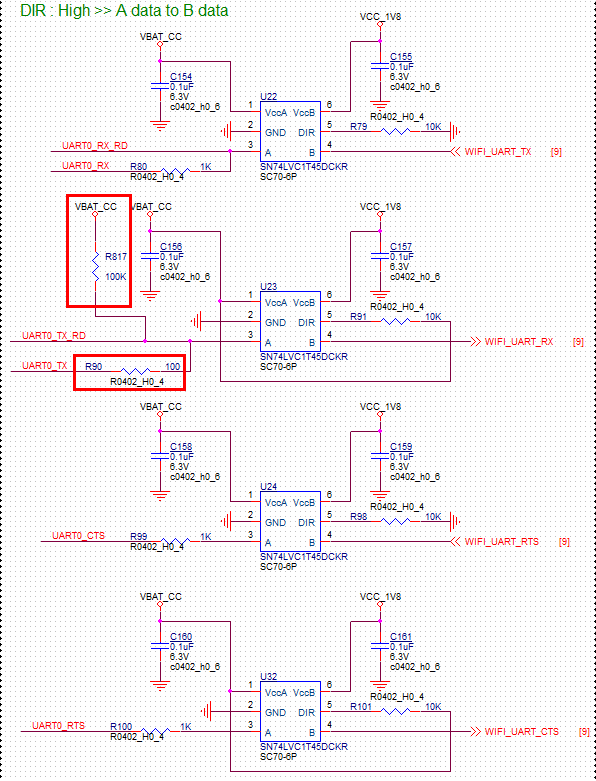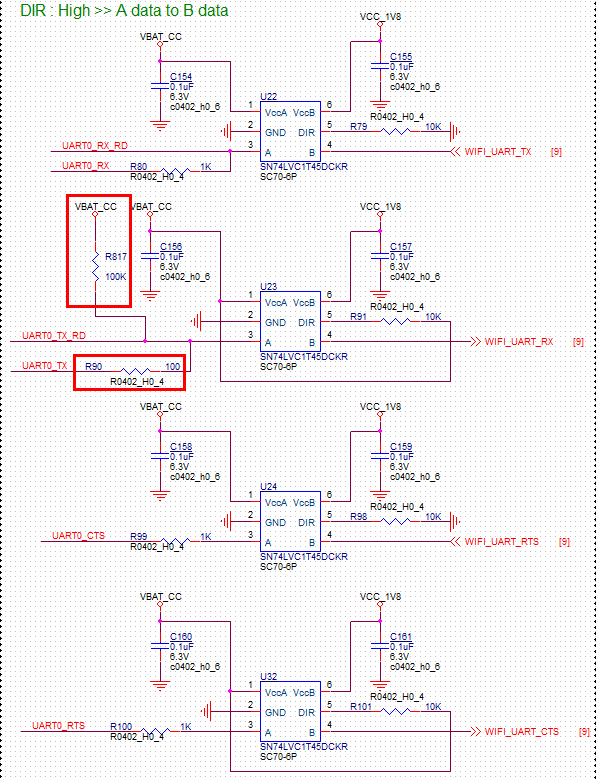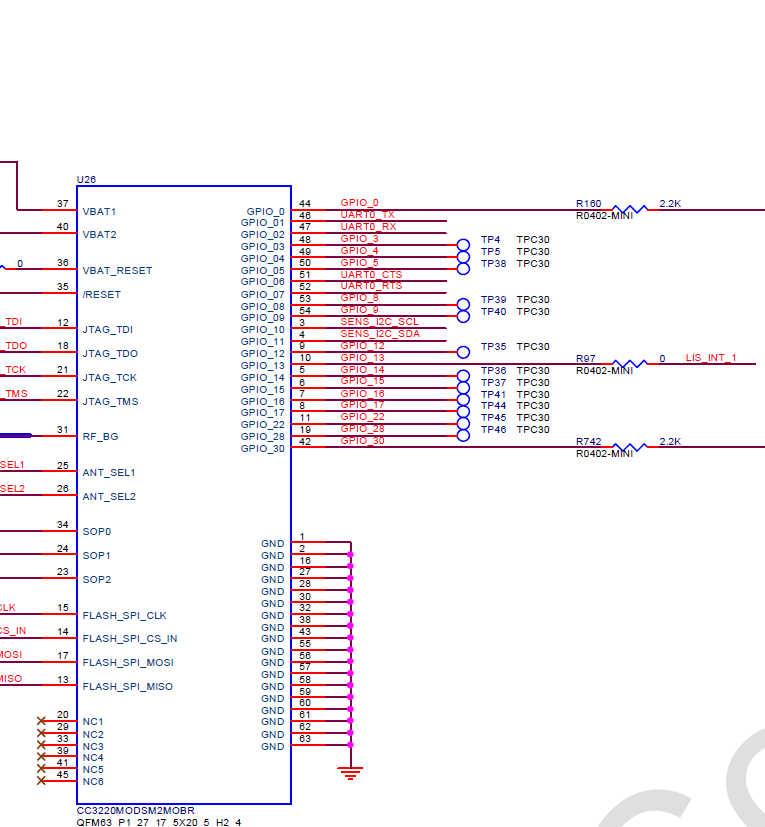Other Parts Discussed in Thread: SN74LVC1T45
Hi TI team,
I am Sercomm HWRD Howard. We want to measure the UART interface of CC3220MODSM2MOBR. However, we don't know which spec should be used. In its datasheet, we found its ViH and ViL in 5.8 Electrical Characteristics. In other side, we also found Tr and Tf of GPIO in Table 5-9. GPIO Output Transition Times (VBAT = 3.3 V) and Table 5-10. GPIO Input Transition Time Parameters. I am not sure whether pin 46 and 47 still counts GPIO if we use them as UART. Am I wrong?
Thanks.
Howard






